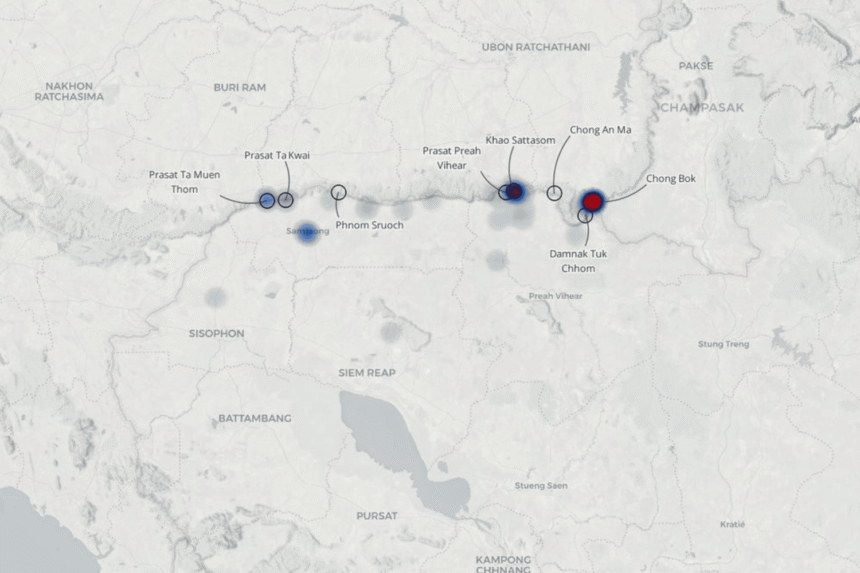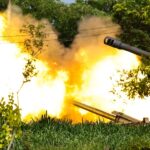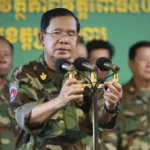CANBERRA – An Australian defence think tank’s analyst’s review of satellite heatmap images shows Cambodia took most steps that raised tensions at the Thailand border before the deadly clashes in July.
Nathan Ruser, analyst at the Australian Strategic Policy Institute, examined satellite data from February to July. His findings show Cambodia was behind 33 separate escalatory actions, while Thai forces undertook 14.
The data points to Cambodia steadily strengthening border outposts and making other preparations for months leading up to the events that left 12 dead on July 24.
First clues of Cambodian tactical upgrades appeared in late February. Satellite images from February 23 to 28 showed Cambodian troops clearing and improving a frontline road at Sam Yaek Lao, located at Chong Bok. These activities kicked off an extended campaign of visible military construction.
By the middle of March, images revealed Cambodian personnel building new access roads to Phnom Prasitthi, a hilltop across from Thai positions. Between March 18 and 23, more satellite pictures captured major upgrades at this key site.
Throughout March, more defensive structures appeared close to the border. By March 25, new outposts, including one at Hill-641 just 300 metres from the dividing line, were visible from above.
Large troop movements and fresh conflict
After a firefight on May 28, which left a Cambodian warrant officer dead, satellite monitoring revealed significant troop relocation. Within a day, images captured Cambodia moving at least 800 to 1,000 soldiers, including specialist units, rocket launchers and armoured vehicles, towards the border.
By May 30, an estimated 12 SH-1 155mm self-propelled artillery pieces from Preah Vihear command had been sent to frontline sectors. Nine vehicles went to Ta Muen Thom, and three reached Chong Bok. June images showed about 30 T-55 tanks stationed between the Preah Vihear temple and the Phnom Prasitthi outpost.
Widespread landmine use
From July 1, satellite photos revealed Cambodia’s Engineering Battalion 392 placing landmines on the eastern slopes of Hill 570. More than 120 PMN-2 landmines went down in the first two days, with the number reaching 300 by July 3.
By July 10, at least another 100 mines had been planted in the area known as the Emerald Triangle. These mines later caused casualties among Thai troops, leaving some soldiers with serious injuries.
Weapons setup and artillery fire
Satellite photos tracked more equipment being moved into place. By June 14, images supported Thai reports that Cambodia had set up long-range artillery aimed at the Thai town of Kantharalak. On July 4, short-range air defence vehicles were visible at Chong Bok.
The situation peaked on July 24, when artillery fire in the Ta Muen Thom temple area killed 11 Thai civilians and a soldier. Satellite tracking showed a high concentration of Cambodian military activity in the area during the attacks.
A BM21 rocket, launched from Cambodian territory, hit a convenience shop at a petrol station in Ban Phue, Si Sa Ket, causing a fire that left eight dead and injured 13.
Tracking the lead-up
Ruser’s report covers incidents from the temple standoff on February 13 through to the mass artillery strikes in July. The satellite evidence mapped road upgrades, new forts, artillery placements, tank moves and minefields, all visible from space and matching the timeline of the conflict.
Drawing on evidence from satellite scans, Ruser concluded that Cambodia carried out most of the actions that raised tensions, while talks between the two governments were still underway.
His expertise in image analysis, used in conflicts such as Ukraine and Myanmar, backs up his statement that Cambodia played the most active role in pushing the border dispute to the breaking point.
Australian Strategic Policy Institute
The Australian Strategic Policy Institute (ASPI) is an independent, non-partisan think tank established in 2001, based in Canberra, Australia. Funded primarily by the Australian government, ASPI provides expert analysis and policy advice on defence, national security, and strategic issues.
Its work includes research on military capabilities, cybersecurity, counterterrorism, and regional security dynamics, particularly in the Indo-Pacific. ASPI publishes reports, briefs, and commentary to inform policymakers, industry, and the public, aiming to foster debate and shape Australia’s strategic policy.
Related News:
Thailand, Cambodian Fighting Intensifies, 751 Schools Shuttered, War Crimes Accusations Surface














